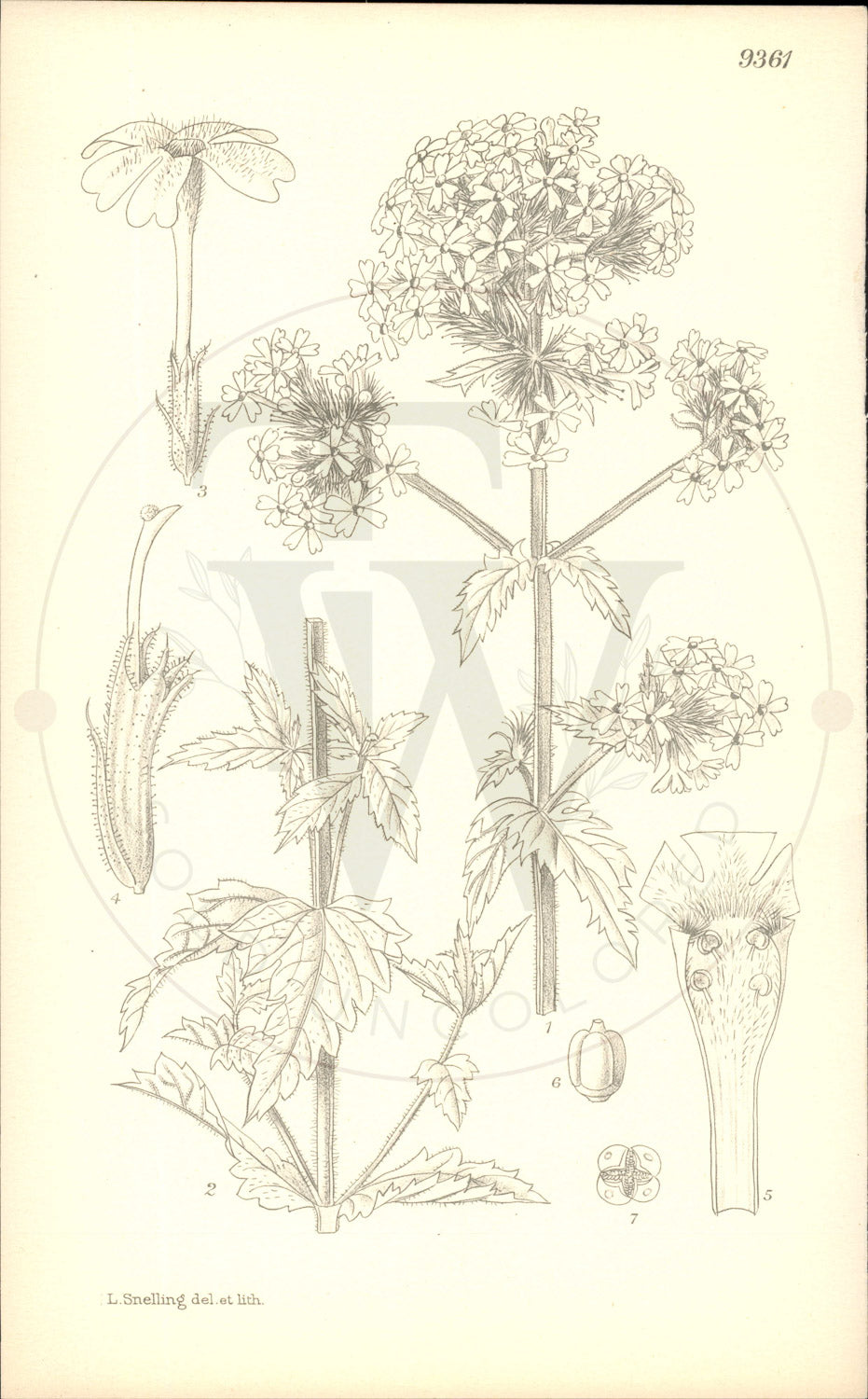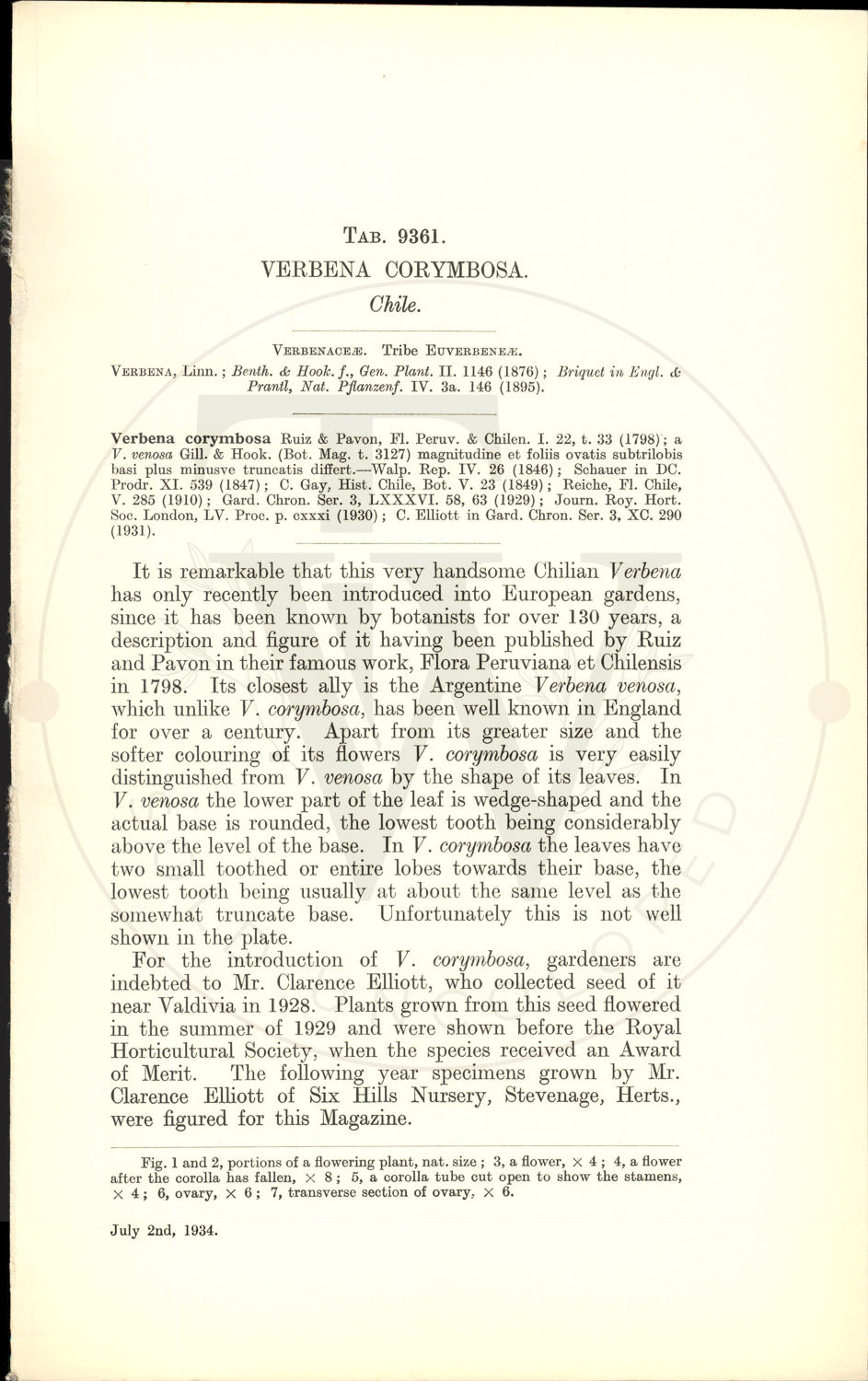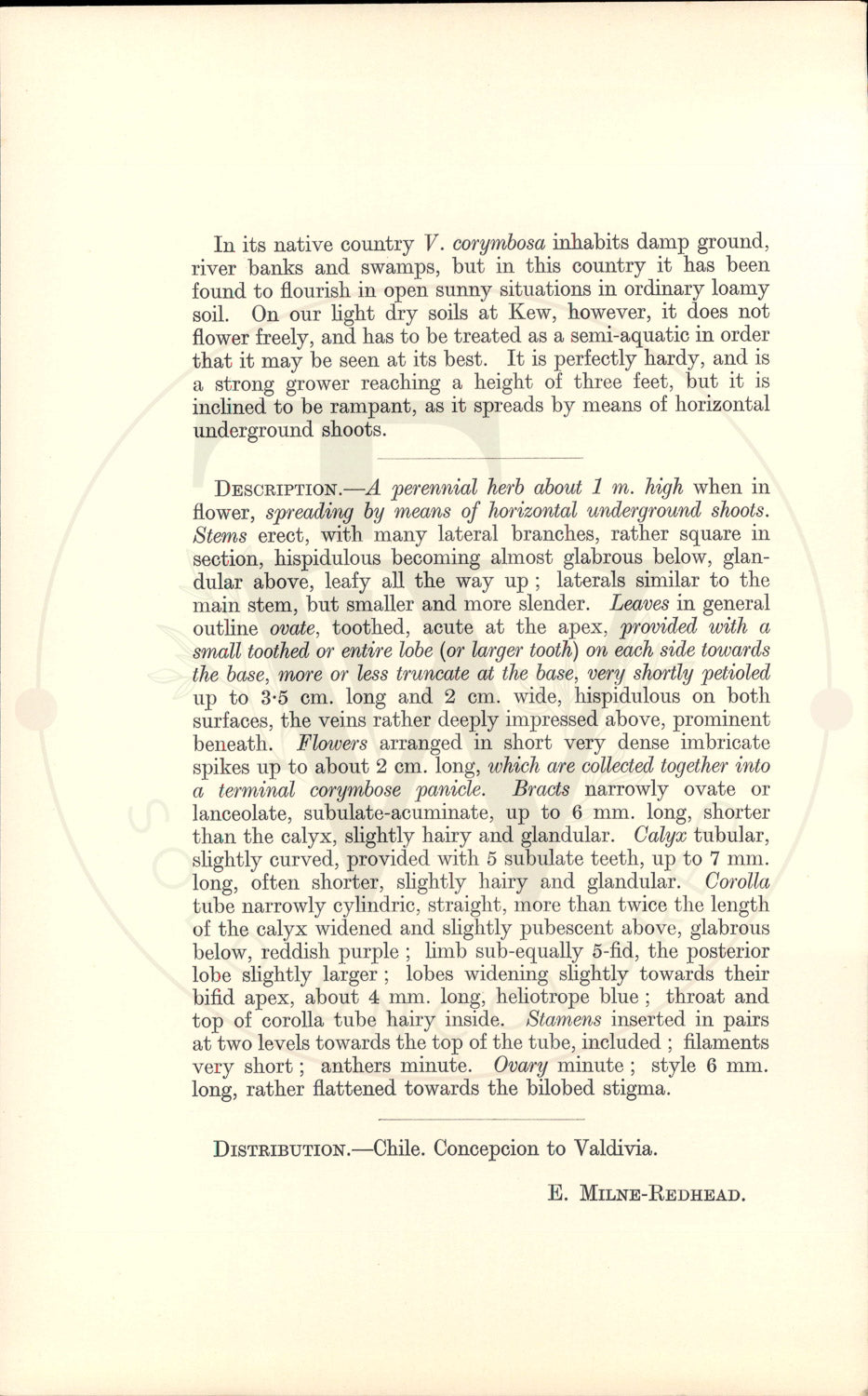Curtis Botanical Magazine
Plate 9361 - Verbena corymbosa
Plate 9361 - Verbena corymbosa
Couldn't load pickup availability
Curtis's Botanical Magazine - Plate 9361
Verbena corymbosa
Family: VERBENACEAE • Tribe: EUVERBENEAE • Publication Date: July 2nd, 1934
Distribution: Yunnan; eastern flank of the Sung- Kwei Divide at 3040-3350 metres. • Tab Author: J. HUTCHINSON.
Botanical Description
It is remarkable that this very handsome Chilian Verbena has only recently been introduced into European gardens, since it has been known by botanists for over 130 years, a description and figure of it having been published by Ruiz and Pavon in their famous work, Flora Peruviana et Chilensis in 1798. Its closest ally is the Argentine Verbena venosa, which unlike V. corymbosa, has been well known in England for over a century. Apart from its greater size and the softer colouring of its flowers V. corymbosa is very easily distinguished from V. venosa by the shape of its leaves. In V. venosa the lower part of the leaf is wedge-shaped and the actual base is rounded, the lowest tooth being considerably above the level of the base. In V. corymbosa the leaves have two small toothed or entire lobes towards their base, the lowest tooth being usually at about the same level as the somewhat truncate base. Unfortunately this is not well shown in the plate. For the introduction of V. corymbosa, gardeners are indebted to Mr. Clarence Elliott, who collected seed of it near Valdivia in 1928. Plants grown from this seed flowered in the summer of 1929 and were shown before the Royal Horticultural Society, when the species received an Award of Merit. The following year specimens grown by Mr. Clarence Elliott of Six Hills Nursery, Stevenage, Herts., were figured for this Magazine.
About This Print
Original black and white uncolored botanical print from Curtis's Botanical Magazine (established 1787). This 9000s series print is from unissued publisher stock, never hand-colored, representing the authentic plate as it appeared in the magazine. Edited by Sir Arthur William Hill for The Royal Horticultural Society, London.
Share







